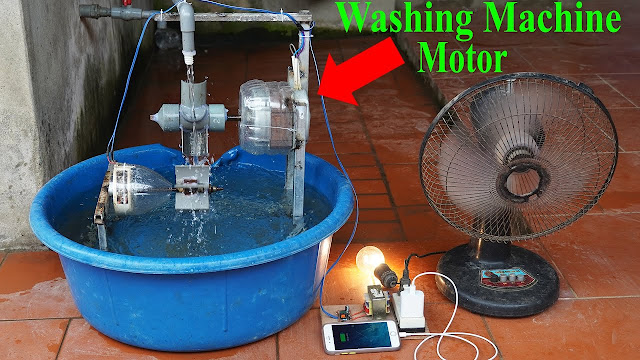on video I turn the water tank into a mini hydroelectric basin at home
I turn the water tank into a mini hydroelectric basin at home
To see if a micro-hydropower system would work for you, determine the vertical distance (head) available and flow (quantity) of the water.
To build a micro-hydropower system, you need access to flowing water on your property. A sufficient quantity of falling water must be available, which usually, but not always, means that hilly or mountainous sites are best. Other considerations for a potential micro-hydropower site include its power output, economics, permits, and water rights.
To see if a micro-hydropower system would work for you, you will want to determine the amount of power that you can obtain from the flowing water on your site. This involves determining these two things:
Head -- the vertical distance the water falls
Flow -- the quantity of water falling.
Once you've determined the head and flow, then you can use a simple equation to estimate the power output for a system with 50% to 70% efficiency or more, which is representative of most micro-hydropower systems.
Simply multiply net head (the vertical distance available after subtracting losses such as pipe friction - the losses will depend on the type size of the pipe among other things, but can be estimated to be from 5 to 10 percent for preliminary calculations) by flow ( use U.S. gallons per minute) divided by 10. That will give you the system's output in watts (W). The equation looks this:
[net head (feet) × flow (gpm)] ÷ 10 = W (Power or Watts)
Determining the “Head” at Your Potential Micro-hydropower Site
I turn the water tank into a mini hydroelectric basin at home
To see if a micro-hydropower system would work for you, determine the vertical distance (head) available and flow (quantity) of the water.
To build a micro-hydropower system, you need access to flowing water on your property. A sufficient quantity of falling water must be available, which usually, but not always, means that hilly or mountainous sites are best. Other considerations for a potential micro-hydropower site include its power output, economics, permits, and water rights.
To see if a micro-hydropower system would work for you, you will want to determine the amount of power that you can obtain from the flowing water on your site. This involves determining these two things:
Head -- the vertical distance the water falls
Flow -- the quantity of water falling.
Once you've determined the head and flow, then you can use a simple equation to estimate the power output for a system with 50% to 70% efficiency or more, which is representative of most micro-hydropower systems.
Simply multiply net head (the vertical distance available after subtracting losses such as pipe friction - the losses will depend on the type size of the pipe among other things, but can be estimated to be from 5 to 10 percent for preliminary calculations) by flow ( use U.S. gallons per minute) divided by 10. That will give you the system's output in watts (W). The equation looks this:
[net head (feet) × flow (gpm)] ÷ 10 = W (Power or Watts)
Determining the “Head” at Your Potential Micro-hydropower Site








No comments